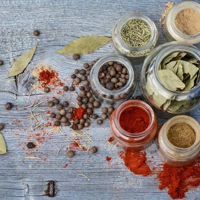Traditional botanical flora of medicinal plants in the treatment of kidney stones in Iran

Accepted: October 27, 2021
All claims expressed in this article are solely those of the authors and do not necessarily represent those of their affiliated organizations, or those of the publisher, the editors and the reviewers. Any product that may be evaluated in this article or claim that may be made by its manufacturer is not guaranteed or endorsed by the publisher.
Authors
Medicinal plants have long been considered for the treatment of many diseases among Iranians and in recent years the use of medicinal plants has increased. In traditional Iranian medicine, many plants have been described to eliminate kidney stones, dissolve kidney stones or prevent stone formation. Based on the results Medicinal plants Cichorium intybus L. Biarum straussii Engl., Tribulus terrestris L., Nasturtium officinale R. Br., Alhagi camelorum Fisch., Adiantum Capillus-Veneris L., Anchusa italic, Alhagi maurorum, Achila mellifolium, Capsella bursa-pastoris (L.) Medicus., Adiantum capillus- Veneris L., Pistacia khinjuk, Acanthophyllum khuzistanicum Rech. F., Malva parviflora L., Allium iranicum (Wendelbo Wendelbo), Centaurea solstitialis L., Cerasus vulgaris Miller, and etc. are medicinal plants that are used in different parts of Iran used to treat kidney stones. It was found that plant families including Fabaceae (10 plants), Asteraceae (10 plants), Brassicaceae (6 plants) and Zygophyllaceae (6 plants) have the most medicinal plants in the discussion of medicinal plants affecting kidney stones and parts such as leaf (27%), fruit (15%), aerial parts (15%) and flower (14%) are the most plant organs that are used in this area for the treatment of kidney stones. The great tendency of people in the knowledge of ethno-botany and plant flora in traditional medicine is evident in the use of medicinal plants and the historical history of the use of medicinal plants. Iranian ethno-botanical knowledge can play a good role in presenting pure ideas of traditional medicine for modern medicine.
How to Cite
PAGEPress has chosen to apply the Creative Commons Attribution NonCommercial 4.0 International License (CC BY-NC 4.0) to all manuscripts to be published.

 https://doi.org/10.4081/jbr.2021.9869
https://doi.org/10.4081/jbr.2021.9869



